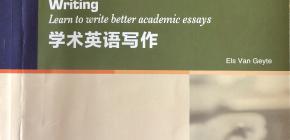Weeks 9-10: Reading comprehension
Aims:
ü enhance reading comprehension
ü analyse sentence structure
ü analyse noun phrases
ü identify structural and argumentational signposts
Review of the previous chapters.
Chapter 7 Reading comprehension
Part One: Self-evaluation
Let Ss read the list of statements and circle the answer according to their condition.
ü I can reduce a sentence to its basic parts to understand its meaning.
ü I can find what is important information in a sentence and what is not by identifying main subordinate clauses.
ü I can work out the meanings of words through an awareness of the different relationships between the nouns in noun combinations.
ü I can identify signpost to work out the function of the section of text I am reading.
ü I can identify argumentational signpost to see how a section fits into the overall argument the author is making.
Part Two:On Writing and Discussing in Group
On Question Discussion
In what way does your reading comprehension help your academic writing?
On Writing
1. Analysing sentence structure
ü Academic language is efficient and a lot is said in few words.
ü A lot of information is given in a short space.
ü Strip the sentence of all the details and look at the underlying grammatical framework.
ü Reduce the long sentences to their essentials.
ü Be aware of the different sentence types.
2. Possible difficulties
ü Some words have the same noun and verb forms.
ü Sentences that contain reduced relative clauses can also cause some confusion.
3. Analysing noun phrases
ü Noun phrases are commonly used in academic writing.
ü Identify head nouns.
ü Be aware of the different relationships between the nouns in noun combinations.
ü Topic, purpose, location and name are only some of the relationships between nouns.
ü When you have three nouns, you need to think about how all the nouns related to each other.
ü Pay attention to the adjective and noun combinations.
4. Identifying signposts
ü Besides the titles and subheadings, the three-part-structure is also important: introduction, main part and conclusion.
ü The background, e.g. prvious research.
ü The position of the author: which previous research they agree/do not agree with.
ü The claims that the author makes.
ü The evidence that is offered for each claim.
ü The common that are made about each claim and/or evidence.
